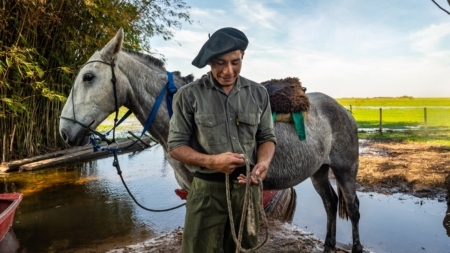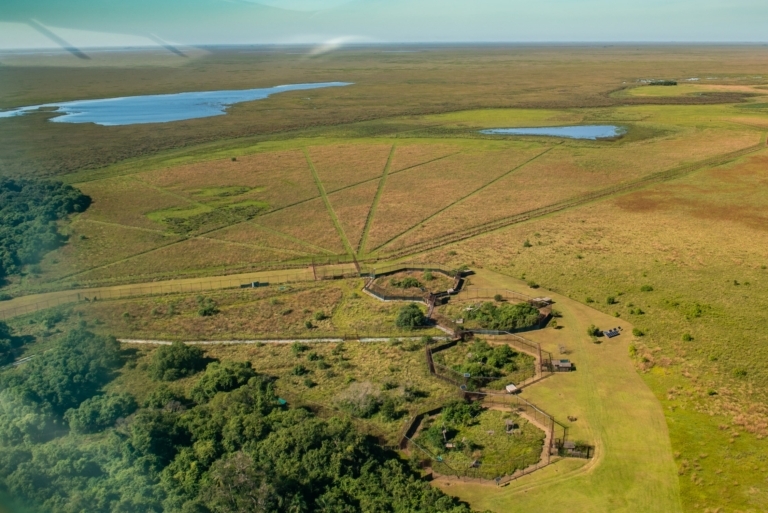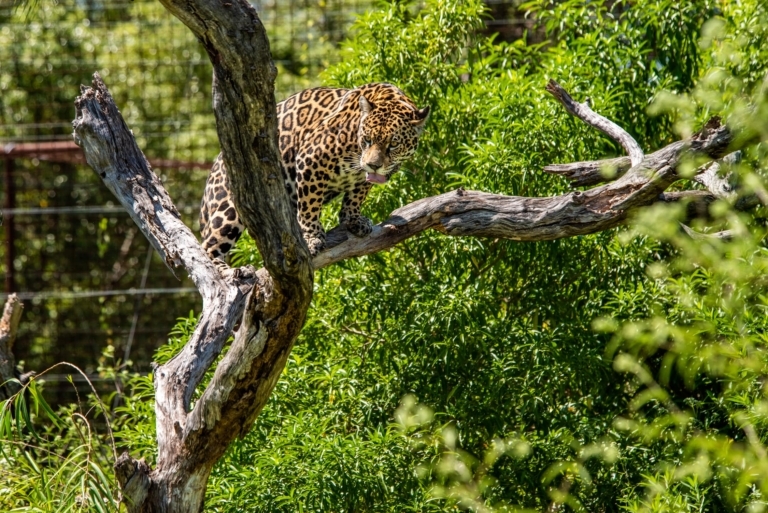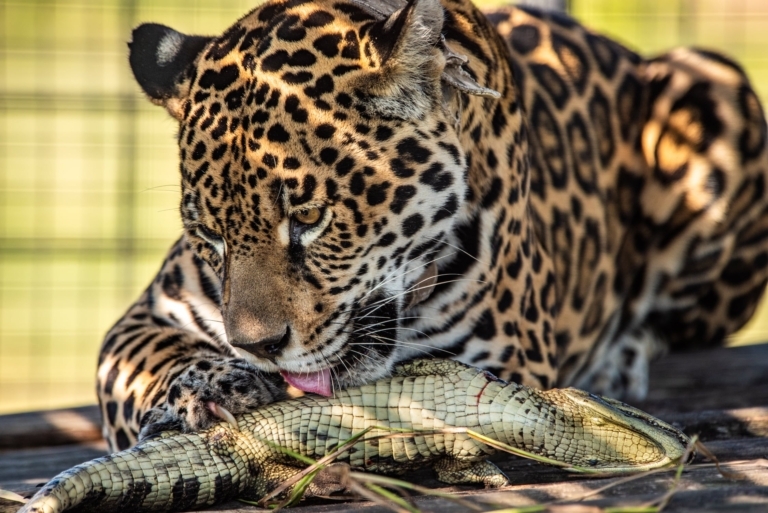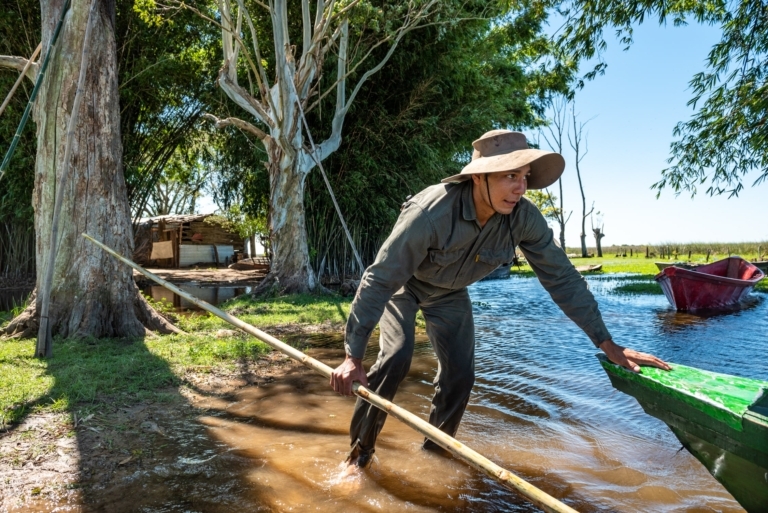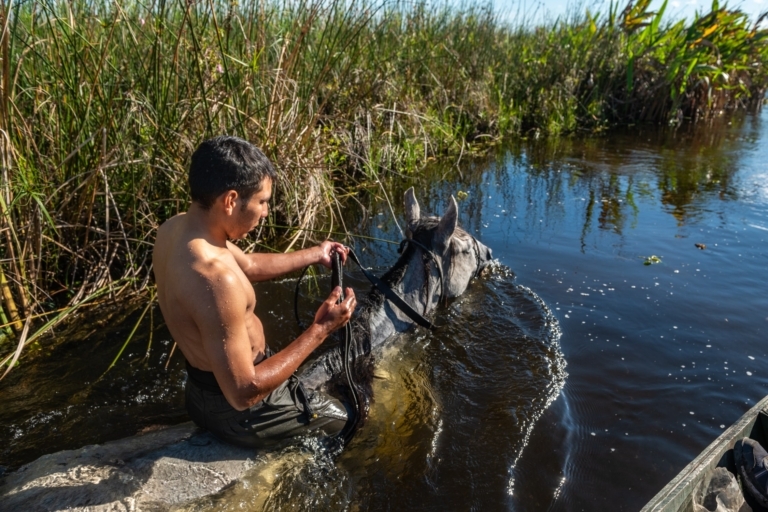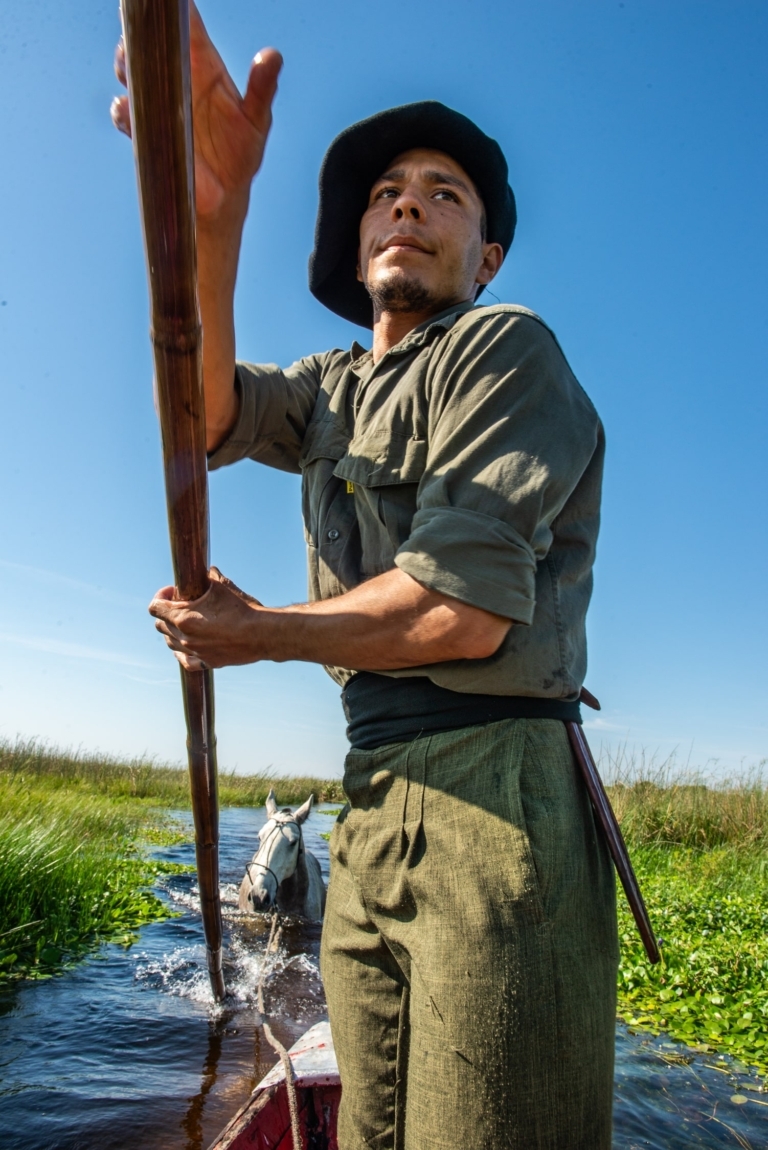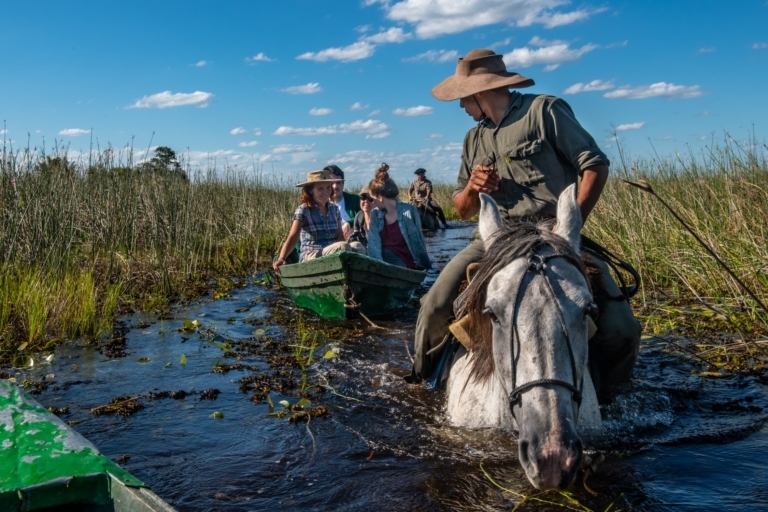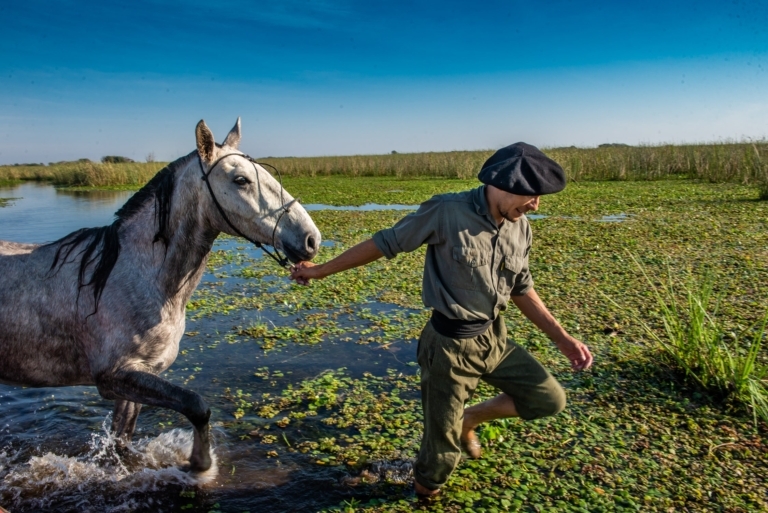The Guide of the Marshes
Returning endangered species to the wetlands of Argentina is good for humans, too.
From the get-go, the goal has been to rehabilitate the entire ecosystem. The challenge, in the Iberá wetlands province of Corrientes, Argentina, as in too many regions today, is that several species there have been driven extinct. To have a fully functioning ecosystem, animals and birds needed to be re-introduced. And so, beginning in 2012, a dedicated team of wildlife biologists, ecologists and volunteers from Rewilding Argentina, a partner of Tompkins Conservation, set to work importing missing critters and even re-educating some of them on how to live on their own.
As cofounder Kristine Tompkins notes in her recent TED Talk, the team has met with remarkable success. They’ve managed to bring back giant anteaters, pampas deer, peccaries, the bare-faced curassow, the red-legged seriema, and red- and green-winged macaws. (On June 28, 2020, five juvenile macaws flew the coop to live in the wilds of Iberá, a major benchmark.) They are close to re-introducing giant river otters. Next, though, comes an even more complicated test: restoring the area’s keystone predator, the jaguar, missing in action from Iberá for 70 years.
Last time we checked in on the program, Tania, the first jaguar born in the region in decades, had had her cubs. Well, she turned out to be a great mom, and one of her cubs may soon follow the example of juvenile that was released this spring into a much wider pen (to see if she could hunt for herself).
New Mexico-based photographer Beth Wald made sure not to miss this potentially historic step. She also found a somewhat overlooked story in the process—how the local embrace of the returning “yaguaraté,” the Guarani word that gave us “jaguar,” is providing a way for some villagers there to stay on the land and practice the old ways of living in the marshes. People have a place in restored ecosystems, too.
Follow and support Rewilding Argentina [en Español] and Tompkins Conservation.
#Denlife. Located on an island in the middle of Iberá National Park, these four hexagonal enclosures at the park’s Jaguar Re-introduction Center house the cats who, it is hoped, will sire a new generation of jaguars, the first to roam free in the Iberá wetlands in 70 years.
Isis, a former house pet, has remained a loner since arriving in Iberá. Learning the finer points of jaguar love has been just one of the skills needed to rewild Iberá.
Although she’s a rescue from a human residence, Isis has developed a taste for caiman.
Federico Fernandez pushes a canoe out into the marshlands of Iberá from a small farm at the edge of the park. As a child, he lived in the middle of Iberá, in a small community or “paraje” called Carambola, where families raised cows, pigs and chickens and grew small gardens on patches of dry land. When he was 10, his family moved into town, to Concepción, so his parents could find work, and so he could attend school. He’s glad to be back.
When the waters get deep, Federico will ride and sometimes swim with his horse. The subtropical temperatures make swimming a welcome activity for both horse and rider.
The marsh guide as gondolier.
Federico looks back on a canoe-load of tourists enjoying the traditional mode of travel through the esteros, or marshes, of Iberá. The return of wildlife to Iberá has attracted increasing numbers of tourists to the region, and increased work for local guides like Federico.
Federico at the end of a day’s guiding.
